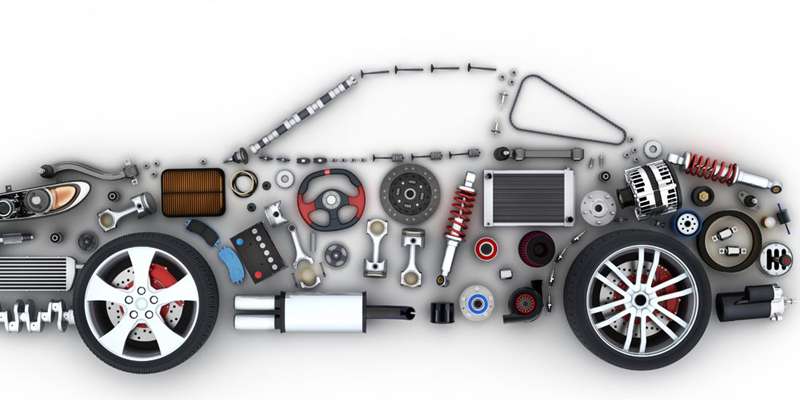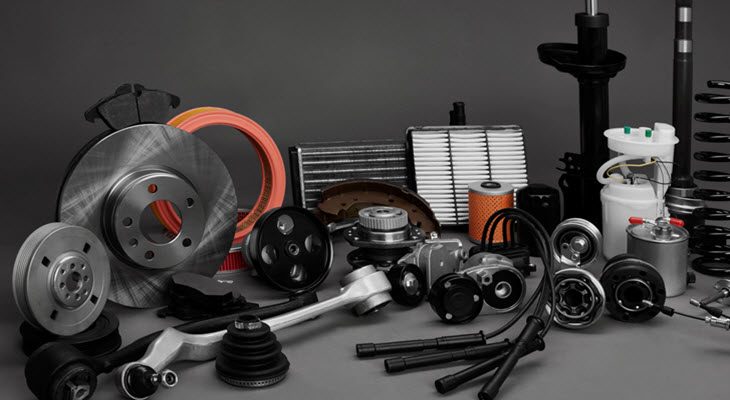Trusted OEM Equipment Parts for Seamless Combination and Efficiency
Trusted OEM Equipment Parts for Seamless Combination and Efficiency
Blog Article
The Advantages and Drawbacks of Selecting OEM Construction Parts Over New Parts for Your Devices
When it involves keeping and repairing devices, the decision between going with original devices supplier (OEM) building and construction components versus brand-new parts is a critical consideration for lots of services. The selection between these two choices can have considerable ramifications for the performance, reliability, and durability of the equipment in inquiry. While OEM components are created to satisfy the particular requirements of the equipment and are typically connected with a greater degree of quality and compatibility, there are additionally disadvantages to be considered, such as possible cost ramifications and schedule issues. Understanding the benefits and downsides of each alternative is essential in making educated choices that can influence the effectiveness and effectiveness of your tools.
High Quality and Compatibility Advantages
When thinking about the quality and compatibility advantages of OEM construction parts versus new parts, it is crucial to review their accuracy design and smooth assimilation capabilities. OEM building and construction components, being initial equipment made by the same company that produced the equipment itself, are created to specific specs.
In comparison, new parts might not offer the exact same level of accuracy design and compatibility as OEM parts. While brand-new parts might be a lot more cost-effective and easily offered in some situations, they usually do not have the precise design and quality guarantee that come with OEM building and construction components.

Greater Expense Factors To Consider
Offered the premium top quality and compatibility benefits of OEM building and construction components over repairs, it is vital to now deal with the element of higher price considerations in the decision-making procedure. While OEM parts are understood for their specific fit and high efficiency, they often come with a higher rate point compared to aftermarket alternatives. The first financial investment in OEM parts might seem extra costly, yet over time, they can verify to be more affordable due to their toughness and reliability.
One vital factor to take into consideration when assessing the greater expense of OEM construction components is the prospective cost savings in terms of minimized maintenance and repair work expenditures. OEM components are crafted to meet the particular demands of the devices, which can cause less malfunctions and much less downtime. This can convert right into considerable price financial savings for equipment owners in regards to lower repair and substitute prices over the lifespan of the equipment.
Furthermore, investing in OEM parts can also add to maintaining the resale value of the devices. Inevitably, while the higher price of OEM building and construction parts may call for a larger ahead of time financial investment, the long-term advantages in terms of efficiency, integrity, and expense cost savings make them a beneficial and sensible option for devices proprietors looking to optimize the worth of their investments.
Integrity and Service Warranty Coverage
In examining the selection in between OEM construction components and brand-new components, an essential facet to consider is the level of integrity and warranty coverage provided (OEM Equipment Parts). OEM building and construction parts, being made by the original devices supplier, are developed to meet the specific specifications of the equipment, making sure a high level of useful source integrity.
On the other hand, repairs may not always use the exact same degree of dependability as OEM parts, as they might not have been specifically designed for the devices in inquiry. This might potentially result in compatibility problems or a higher risk of failing. Moreover, the service warranty coverage for repairs may differ depending upon the maker or vendor, possibly leaving equipment proprietors with much less defense against malfunctions or flaws. Therefore, when taking into consideration integrity and guarantee protection, going with OEM building components might offer an extra secure and dependable solution for devices upkeep and long life.
Performance and Longevity Enhancements
Having developed the relevance of integrity and service warranty coverage in the selection between OEM building and construction components and repairs, the focus currently changes in the direction of reviewing how these elements add to efficiency and long life enhancements. OEM construction parts are crafted to exact requirements, ensuring seamless integration and ideal efficiency within the tools. This accuracy causes enhanced overall efficiency and efficiency, as the parts are created to function harmoniously with the machinery they are intended for.
In addition, OEM parts typically go through strenuous screening to meet industry standards and maker needs, assuring a greater degree of top quality compared to common choices. This superior quality translates into raised sturdiness and durability for the equipment, reducing the threat of unanticipated breakdowns and pricey repair services. By utilizing OEM building and construction parts, tools proprietors can experience Website improved performance, extended lifespan, and decreased downtime, inevitably resulting in enhanced operational efficiency and cost-effectiveness in the lengthy run.
Possible Restricted Availability Issues

When counting on OEM building and construction parts for tools repair and maintenance, one significant drawback that can emerge is the potential limited accessibility of these parts. Because of elements such as production schedules, supply chain disturbances, or the discontinuation of particular parts by suppliers, there might be circumstances where OEM parts become limited or even out-of-date. This deficiency can cause hold-ups in devices servicing, prolonged downtime, and enhanced costs associated with sourcing different remedies.
Restricted accessibility of OEM building and construction components can likewise hinder the efficiency of maintenance groups, as they might require to invest additional time and effort looking for appropriate replacements or waiting for back-ordered parts to get here. In situations where particular OEM components are essential for optimum tools efficiency or security compliance, the absence of these components can posture severe operational threats. To alleviate these challenges, tools managers must maintain clear communication with providers, discover options for equipping important parts beforehand, and think about different services or aftermarket components when top article OEM alternatives are scarce.
Final Thought
In final thought, when taking into consideration whether to choose OEM building and construction parts over brand-new components for equipment, it is essential to weigh the benefits of top quality, compatibility, reliability, efficiency, and long life against the downsides of higher expense and possible limited accessibility. Ultimately, the choice must be based on the particular demands and priorities of the equipment owner, in addition to the value of service warranty coverage in guaranteeing long-lasting complete satisfaction and operational effectiveness.
When it comes to repairing and preserving tools, the choice in between choosing for original tools producer (OEM) building components versus new components is an essential factor to consider for many companies.Provided the exceptional quality and compatibility benefits of OEM building parts over new parts, it is important to now attend to the facet of greater price factors to consider in the decision-making procedure. OEM Equipment Parts.On the other hand, new parts may not always offer the same degree of integrity as OEM components, as they may not have been particularly developed for the equipment in question.When relying on OEM building and construction components for tools upkeep and fixings, one substantial disadvantage that can occur is the potential minimal accessibility of these parts. To mitigate these challenges, devices managers need to keep clear communication with providers, explore alternatives for equipping essential components in breakthrough, and think about alternative solutions or aftermarket components when OEM choices are limited
Report this page